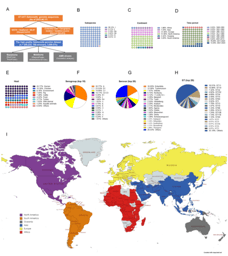Enforcement is central to the evolution of cooperation
Published in Ecology & Evolution

This is the question we set out to answer in this paper. We argue that all levels of life have one thing in common; cooperation often relies on difficult-to-detect enforcement mechanisms that suppress selfish behaviour. In support of this argument we review empirical examples of enforcement from the genome all the way up to ecological interactions, including the suppression of transposable elements, uniparental inheritance of mitochondria and plastids, anti-cancer mechanisms, reciprocation and punishment in humans and other vertebrates, policing in eusocial insects, and partner choice in mutualisms between species. We also develop a series of new mathematical models that show that, contrary to the typical view of the field, enforcement is generally predicted to evolve and spread across a wide variety of biological scenarios.

This paper grew out of a conversation along the shores of Lake Geneva. Kevin Foster and I had just organized a symposium at the 2015 ESEB meeting in Lausanne titled "Cooperation without kinship: from genomes to mutualisms" and were discussing where to take the topic next.
The goal of the symposium had been to bring together people studying examples of so-called egalitarian cooperation. These are examples of cooperation where there is little or no relatedness, and as a consequence the powerful force of Hamiltonian kin selection cannot apply. Examples include many instances of cooperation in humans, as well as cooperation in host-symbiont systems, within the eukaryotic cell (nuclear-mitochondrial cooperation) and within genomes. Egalitarian cooperation is contrasted with fraternal cooperation, where the interacting individuals are genetically-related members, such as in the eusocial insects and the evolution of multicellularity.

We had talks and posters on all kinds of egalitarian cooperation and Kevin and I initially set out to synthesize our thoughts in light of this symposium. We wanted to review the full diversity of egalitarian cooperation to determine the processes that govern their evolution. Our initial instinct, as often seen in the literature, was that egalitarian cooperation often rises primarily out of shared interests. This is the idea that genes in a genome are ‘in the same boat’ that no-one wants to sink, and that this makes everyone behave. However, the more we read and thought about it all, it became clear that this is rarely sufficient to stop selfish behaviour. A key example is our own genome, where over half of our DNA arose through the selfish replication of transposable elements. Here, and many other cases, there is growing evidence that the key to maintaining cooperation is mechanisms that enforce good behaviour. We further realised that, while relatedness is certainly important for fraternal systems, there too enforcement is often critical.
We rewrote the paper, making the stronger claim that enforcement is an underappreciated, and often critical, ingredient for cooperation across all scales of biological organisation. We initially submitted this paper as a quite straightforward review of the empirical literature. And while we managed to convince two reviewers of our argument, the third quite literally told us to stop waving our hands and produce some mathematical models like grown-ups. Said and done, we brought in the theoretician Nick Davies to formalize our arguments. We developed a series of mathematical models that both defined enforcement in a formal way, but also allowed us to show that enforcement can readily evolve in all sorts of biological situations and across a wide range of parameter space.
Owing to the fact that the three of us are spread across three universities, on two continents, we have clocked in endless hours of Skype time in the almost four years since we first began talking about this project. Reviewing such diverse literature has mean that we have learnt a lot of new biology, but it also reinforced the value in considering multiple systems at the same time. Enforcement has been studied for a long time. However, it is only by considering cooperative systems at all levels, from genomes to interspecific mutualisms, side-by-side that its central role is revealed.
Follow the Topic
-
Nature Ecology & Evolution

This journal is interested in the full spectrum of ecological and evolutionary biology, encompassing approaches at the molecular, organismal, population, community and ecosystem levels, as well as relevant parts of the social sciences.



Please sign in or register for FREE
If you are a registered user on Research Communities by Springer Nature, please sign in
Excellent review, encompassing several genera and orders. Also insightful for further studies, leading to cancer biology and evolution of enforcement.